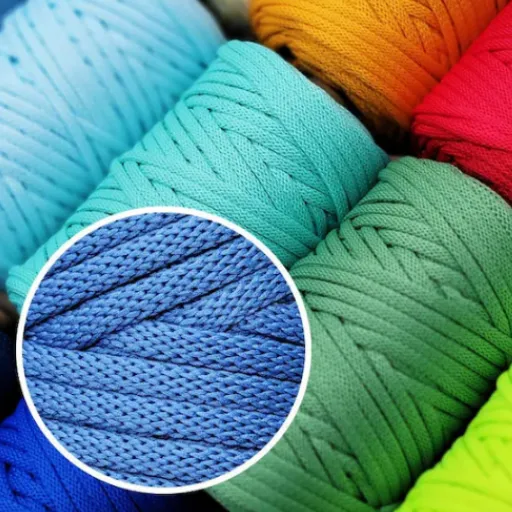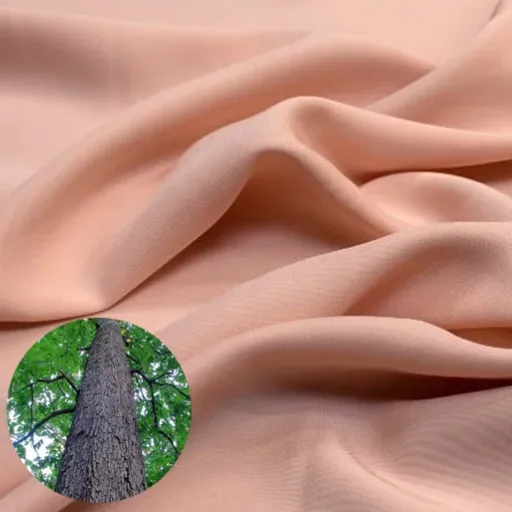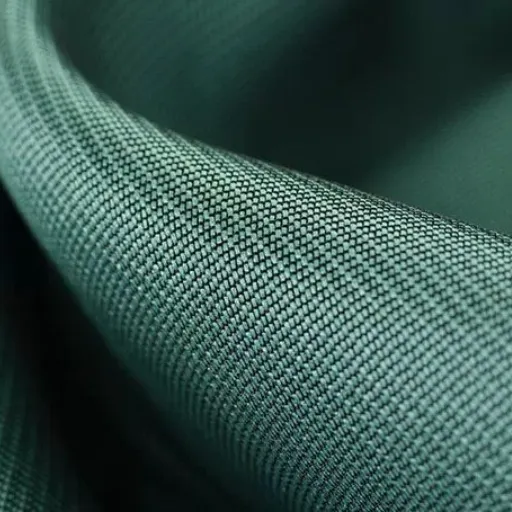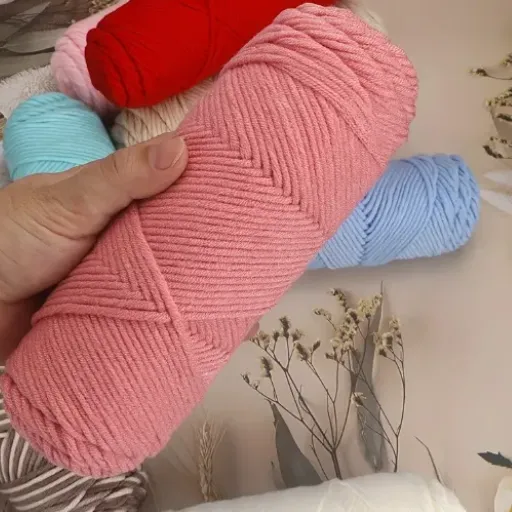Viscose and rayon fabrics have a history of being widely used for various purposes in fashion, home décor and other applications, but the truth is that they are still not thoroughly understood. At first sight, the two fibers seem to be the same and this is one of the reasons people often get confused about their history, ecological aspects, and uses. This blog post is going to clarify the confusion of viscose and rayon, their properties, production methods and how these affect their quality and eco-friendliness. If you are a fashion lover, a green supporter, or just interested in the subject of fabrics, this guide will offer helpful and informative insights. Continue reading to see the amazing world of viscose and rayon fabrics!
What is Viscose Fabric?

Definition and Composition of Viscose
Viscose is a semi-synthetic textile that comes from cellulose, which is mainly obtained from wood pulp. The production of viscose involves a chemical process that transforms cellulose into a very fine fiber. Although it is made from plant materials, the production of viscose is such that it is considered semi-synthetic rather than textile because of the large number of chemical treatments involved.
Viscose contains cellulose as its main ingredient and this is the primary structural component of plants. The production process involves destroying the cellulose, dissolving it, and then regenerating the fibers that can be woven into fabrics. Such an engineered process is responsible for giving viscose its soft texture and silky appearance, thus making it a popular choice not only for the fashion industry but also for home textiles.
In addition to being very light and breathable, viscose also has the excellent property of dye uptake, which results in very colorful and numerous color options. Nevertheless, the whole production process and environmental impact are very serious issues since the chemical treatments in viscose have caused a lot of debate about sustainability. It is very important to know the composition and properties of viscose if one is to make the right choice about its use and care.
Difference Between Viscose, Rayon, and Modal
Viscose, rayon, and modal are all types of semi-synthetic fibers derived from cellulose, but they differ in production processes, properties, and applications.
| Key Point | Viscose | Rayon | Modal |
|---|---|---|---|
| Source | Wood pulp | Cellulose fibers | Beech trees |
| Texture | Smooth, soft | Soft, versatile | Silky, smooth |
| Strength | Moderate | Varies | Stronger |
| Absorbency | High | High | Very high |
| Durability | Prone to wear | Varies | More durable |
| Breathability | Excellent | Good | Very good |
| Stretchability | Limited | Good | Moderate |
| Environmental | Concerns on impact | Mixed impact | More eco-friendly |
| Cost | Affordable | Varies widely | Higher cost |
| Dye Friendly | Yes | Yes | Yes |
Characteristics of Viscose Fabric
Viscose is a fabric made from regenerated cellulose and it is a semi-synthetic fiber derived mainly from wood pulp. It is famous for its smooth texture and a feel like that of silk; thus, it is usually called a more expensive alternative to silk. One of the major features is its high absorbency so that the fabric is suitable for making clothes like dresses, blouses, and sportswear that absorb moisture very well.
Viscose has another good point: its breathability which makes it a good fabric in hot weather or during sports activities. But its strength is a downside as the fabric easily gets damaged and it is likely to get weakened if it is underwater or used for a long time. The fabric gives some stretch but its ability to keep its shape is less than that of polyester and other fabrics.
The production of viscose raises environmental issues because it uses a lot of chemicals and it leads to the cutting down of trees. On the whole, the production technology has made some progress toward making it a little bit more eco-friendly. Nevertheless, viscose is still very much in demand for its wide-ranging qualities, including its being soft to the touch and its being absorbent, thus being a popular choice for clothing that is both elegant and affordable.
Manufacturing Process of Viscose
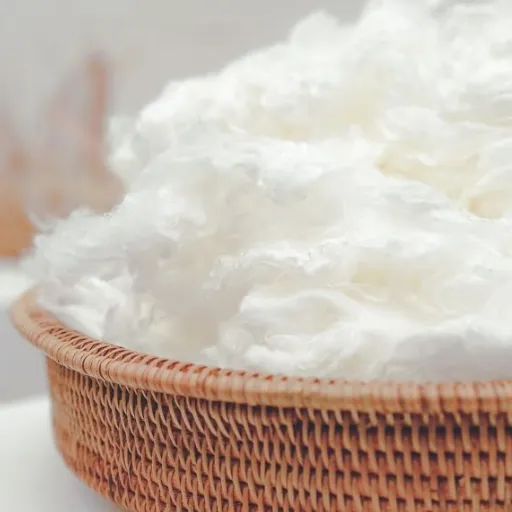
Raw Materials Used in Viscose Production
The production of viscose incorporates cellulose as the major raw material and this cellulose is derived from either wood pulp or cotton linters. The reasons why cellulose is chosen are that it is plentiful, cheap and it suits well to the viscose manufacturing process. The wood pulp is mainly derived from fast-growing trees like eucalyptus, spruce, and pine, which are specifically cut for this purpose.
One more necessary material in the production of viscose is the chemical agents. Sodium hydroxide is applied to the cellulose, which causes its breakdown into an alkali solution. At the same time, carbon disulfide is added to form cellulose xanthate, which is the intermediate compound. The mentioned chemicals are of paramount importance in getting the natural fibers of the plant turned into a viscous solution ready for spinning into fibers.
Not to forget, water is a major material that is required at all stages of the production process. It is the main contributor of the chemicals dissolving, the rinsing of the xanthate solution, and the washing of the final viscose fibers to remove the impurities. The water consumption shows the need for adopting eco-friendly methods as improper water management can create pollution problems. By properly managing these raw materials, the viscose makers create a fiber that is very versatile in nature and has many different applications.
Step-by-Step Process of Making Viscose Fiber
- Preparing the Cellulose: The very first thing in this process is to get (usually) wood pulp as the source for natural cellulose. Treating the cellulose with chemicals, such as sodium hydroxide, often clears the cellulose and converts it into a usable form. The cellulose cleaned is then pressed for the elimination of excess liquids and shredded into tiny crumb-like pieces.
- Creating the Xanthate: The processed cellulose crumbs undergo treatment with carbon disulfide, which is a process that changes the material into a cellulose xanthate solution. This procedure also makes the cellulose soluble and ready for spinning. The solution is well-mixed to guarantee uniform consistency and is subsequently aged to enhance its qualities for the fiber-making process.
- Spinning the Fibers: The cellulose xanthate solution undergoes dilution in a spinning bath that usually consists of sulfuric acid and other substances. The combination of these ingredients regenerates the cellulose, thus transforming it into solid fibers. Subsequently, these fibers are stretched, rinsed, and treated for quality control. They are then washed and dried, yielding the soft and versatile viscose fiber that can be used in a wide range of textile applications.
By adhering to these processes, the production of viscose fiber is not only done quickly but also done in a way that takes care of the environment, with new methods being a major part in reducing chemical waste and water consumption even more.
Chemical Inputs and Their Role in Production
Chemicals are cornerstones in the production process of viscose fiber and the raw materials are the initial state of transformation and the resulting cotton-like fibers are the final ones. The most important chemicals for this process, in any aspect or effect, are sodium hydroxide and carbon disulfide. The first one, sodium hydroxide, comes into action by treating cellulose (the main raw material) in an alkaline solution, thus facilitating the formation of alkali cellulose, while the second one, carbon disulfide, liquefies cellulose into a solution that can be further processed to produce fibers.
As a matter of fact, their role is indispensable; however, environmental concern and health hazard situations make it necessary to treat these chemicals with utmost care. The previous era of chemical waste during production led to the obsolescence of plus the advent of technology that helps to control such a situation. Many plants have now resorted to closed-loop systems to recover, recycle, and reuse chemicals resulting in massive cuts in emissions and pollution. These breakthroughs mark a landmark movement towards the uniformity of production with environmental sustainability.
Producers have also been looking into alternative routes to classic chemicals in light of the environmental concerns of the past. As an instance, research is going on in the direction of developing safer solvents and enzymes as the basis of future chemical-free production. The use of these sustainable innovations not only reduces the negative environmental impact of viscose but also ensures that the qualities and wide applications of the fiber continue to be its strong points.
Environmental Impact of Viscose Fabric
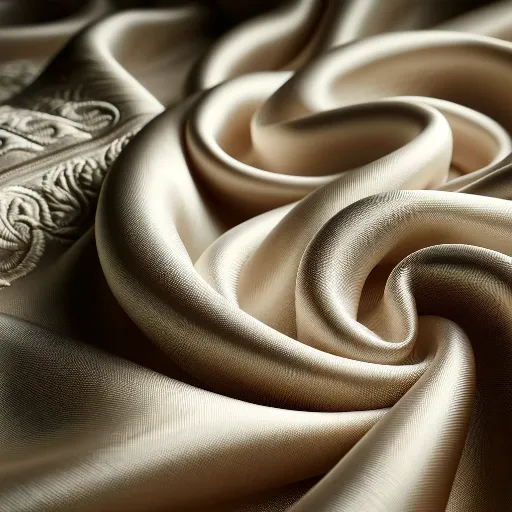
Water Consumption in Viscose Production
The production of Viscose is a water-intensive process, where water is mostly consumed at the stages of cellulose extraction and then fiber formation. Large volumes of water are absorbed in the process of dissolving wood pulps and transforming them into the viscose solution. Hence, chemical treatments and washing processes at different stages of production also consume huge amounts of water; hence, during this whole process, water becomes a concern in regions where water is scarce.
The environmental impact of water consumption in the viscose manufacturing process is very high, as the local water supplies may get contaminated if the wastewater is not treated properly. The wastewater that comes from the viscose factories usually contains sulphuric acid and carbon disulfide, which can adversely affect the aquatic ecosystem and pose health risks to humans if not managed correctly. This problem can be solved by implementing proper filtration and reuse of water, which will eventually lead to less water consumption overall.
The industry’s transition toward the adoption of water-saving technologies and closed-loop systems to enhance the sustainability of viscose production is already underway. In addition, a significant number of companies have begun to implement strategies wherein they are repeating and recycling water throughout the production cycle, thereby greatly diminishing waste. If these practices are advanced, the industry will not only reduce water usage and its environmental impact but also make sustainable viscose a more accessible option for eco-minded consumers.
Deforestation and Sourcing of Bamboo Viscose
The connection between bamboo viscose production and the sourcing of raw materials is a matter of precious environment. Bamboo is highly considered as a sustainable plant due to its fast growth rate and reduced requirement of fertilizers and pesticides. The worries, however, arise when the clearing of rainforests for planting bamboo comes to the fore. Apart from disrupting the natural habitats, deforestation also leads to the emission of carbon, thus, killing the diversity and hastening the process of global warming.
In order to attain a sustainable performance, sourcing of bamboo with responsibilities is of utmost importance. The process includes an assurance that the bamboo used in the production of viscose is derived from well-maintained plantations and does not cause the conversion of primary forests. The issuance of certifications by internationally accepted organizations can assist in establishing that bamboo sourcing is up to the mark of meeting very high environmental and social standards. Compliance with these principles gives the producers the privilege of lessening the impact on the environment while taking advantage of the renewability of bamboo.
The industry is taking steps to improve its transparency and accountability. The need for stricter regulations and clearer labeling to enable consumers to make informed choices about bamboo viscose products is widely voiced by the stakeholders. The consumers who purchase from companies that practice sustainability are, in effect, playing an active part in the fight against deforestation and in the promotion of the eco-friendly use of bamboo in the textile industry.
Chemical Waste Management and Its Implications
The management of chemical waste is a paramount issue that concerns the textile industry where the production process involves the use of toxic chemicals. The prevention of chemical waste soil, water, and air pollution is the most essential measure of soil, water, and air pollution. Applying such measures is very beneficial to ecosystems and human health. In the specific case of the bamboo viscose industry, the chemical waste management of such by-products as carbon disulfide and sodium hydroxide is the most critical step in reducing environmental impact.
The waste treatment entails imposing rigorous treatment protocols and the adoption of environmentally friendly methods of production. For example, the use of closed-loop processing systems may shrink the chemical waste by a large margin as it involves the recycling and reusing of solvents that were previously used in the viscose production process. The process not only contributes to the reduction of pollution but also makes the whole manufacturing cycle more sustainable, which is a global effort in the direction of eco-friendly practices.
The control of chemical waste in the bamboo viscose industry can result in severe water contamination, soil degradation, and health hazards for local people. The solution to these problems requires both strict regulatory measures and the manufacturers’ commitment to make sustainable practices a priority. The consumers also have a role to play by giving their support to the companies that are open about their operations and that have adopted and are practicing eco-friendly policies, thereby indirectly creating the demand for responsible production standards.
Uses of Viscose in Various Industries
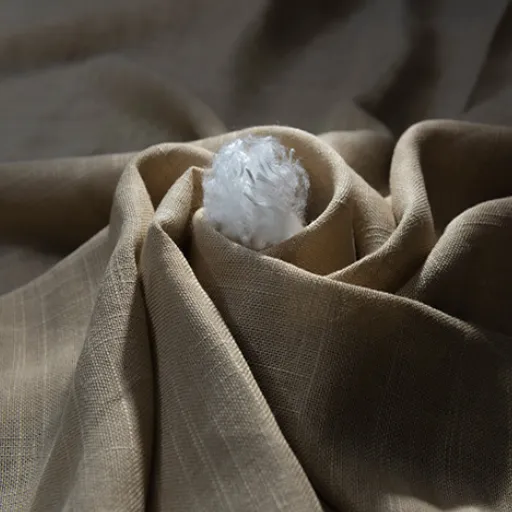
Fashion Industry Applications of Viscose
Viscose is a textile compound that has found its way into the fashion world because of its wonderful properties. To put it simply, its raw state imitates silk and has good breath and hence is often regarded as suitable for the production of an assortment of clothing such as dresses, lovely tops, skirts, and even business suits. Not to mention its amazing ability to flow softly, it becomes an optimum choice for making outfits that need fluidity and motion.
On the other hand, the main advantage that viscose has in the fashion world is the range of dyes that it can take. This means that if a designer wants bright and vibrant or soft and subtle colors, he can get them easily. This quality makes it very easy for the designer to get equally colorful and intricate patterns on a broad spectrum of garments. Moreover, it is quite common for viscose to be mixed with other natural or synthetic fibers like cotton and polyester in order to make the fabrics extra strong and stretchy; this is done to suit the needs of the fashion industry from casual to stylish.
Though fashion has been one of the major suppliers of the viscose textile, the environmental issues raised by its use are a matter of serious concern. The usual way of making viscose involves a large amount of chemicals and energy to be used and if the environment is not taken care of, these can certainly be the cause of destruction. On the other side, the continuous flow of ideas towards organic and sustainable fashion has opened the doors for eco-friendly viscose production methods, which will eventually turn the whole manufacturing sector towards the green side of making this versatile material.
Home Goods and Upholstery Featuring Viscose
Viscose has made a mark for itself as one of the most favorite materials in home goods and upholstery due to its rich quality, softness, and attractive outlook. Its silk-like feel and blending with other fibers make viscose a material that is commonly used in curtains, sofas, cushions, and rugs. This material not only improves the visual appearance of houses but also provides sophistication and warmth.
Among the reasons for the preference of viscose in the manufacture of home textiles one is its ability to absorb different kinds of dyes and colors very brightly, so it is guaranteed that products will come in a wide variety of design options to fit all kinds of tastes and styles. Moreover, by its lower cost compared to natural silk, viscose is indeed a wise choice for luxury-looking home furnishing at a more affordable price. Nevertheless, it is advisable that the buyers are made aware of the fact that the durability of viscose is not that strong when it comes to moisture or heavy wear, thus the proper care will be needed to enhance the life span of the items made of viscose.
Sustainable viscose is also starting to make an appearance in upholstery and home goods along with the increasing demand for eco-friendly production. The manufacturers are gradually turning towards more eco-friendly practices, such as using certified forests for wood sources and closed-loop processes, to produce viscose that has a low impact on the environment. This move towards sustainable production not only helps the environment but also fits perfectly with the needs of the buyers who are looking for eco-friendly options to beautify their houses without sacrificing quality or style.
Comparison of Viscose with Other Textile Fibers
When the comparison of viscose to the other textile fibers is made, its properties and characteristics are unique and it is really difficult to find out the other one with similar features. Viscose fiber is a semi-synthetic one and has a soft and smooth texture that is comparable to the natural fibers of cotton or silk. It is also very breathable and hence, very suitable for warm climate garments. Viscose is more skin-friendly than synthetic fibers like polyester and absorbs moisture better and therefore causes no discomfort during hot humid weather.
On the downside, besides these positive points, viscose is also quite different from other fibers in terms of drawbacks. Its strength is not comparable to that of synthetic fibers like polyester or nylon, especially when it is wet. Cotton and linen can be washed and worn numerous times, but viscose is less strong and more likely to suffer from shrinkage or damage if not properly cared for. Thus, it cannot be used in the case of products that require strong performance or frequent washing.
Considering the environment, viscose is viewed as a fiber that is neither too bad nor too good. Natural fibers like organic cotton or wool, for instance, are generally considered more or less sustainable while the traditional manufacturing of viscose has been criticized for its negative ecological impact caused by the heavy use of chemicals. However, at the same time, the introduction of sustainable production methods (e.g. closed-loop processes) has given a boost to the eco-friendliness of the fiber to the level of or even above most conventional synthetic ones. This is a great advantage and thus, people who desire a combination of comfort, style, and eco-friendliness can choose viscose.
Care and Maintenance of Viscose Fabric
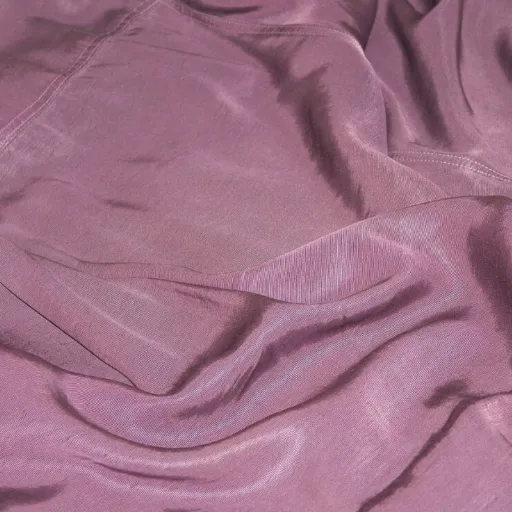
Washing and Drying Viscose Garments
Viscose fabric needs to be treated with care if its quality and lifespan are to be preserved. Hand washing of viscose garments is the preferred method and should be done in cold or lukewarm water with a mild detergent. This way, the fibers, which are most vulnerable when wet, are not damaged. It is best to avoid scrubbing or twisting the fabric since this can lead to distortion of its shape.
In case machine washing is unavoidable, wash the item on a delicate cycle with cold water and put the garment in a mesh laundry bag for protection. Always keep viscose items away from heavy ones to avoid possible abrasion. Reduce the water temperature to very low, as hot water can cause either shrinkage or weakening of the fibers, which are both undesired conditions.
Washing and drying of viscose garments should be carried out with caution de facto. Do not tumble dry as high heat can lead to shrinkage and ruin the fabric. The preferred method is to place the garment flat on a clean towel or hang it to dry in a shaded area within the house where direct sunlight cannot reach it. Proper drying techniques are not only to retain the garment’s original shape but also to have a smooth-textured appearance.
Ironing and Storage Tips for Viscose Fabrics
The delicate nature of viscose requires setting the iron to low heat in every case to avoid scorching or damaging. Besides, it would be a good idea to turn the garment inside-out and use a pressing cloth to create a barrier of protection between the iron and the fabric. Thus, the delicate texture of the viscose is not sacrificed. Do not apply steam directly to the fabric, for the strong moisture may cause the fibers to stretch or twist beyond their limits.
Continued dry-cleaning is the only way to store viscose settings properly; thus, wearing them or putting them away at home should be done only after they have been completely dried. Storing them in a cool and dry place, preferably folding rather than hanging, will reduce the chances of the fabric getting misshapen. If hanging is the only option, use padded hangers so that the garment can keep its shape.
Moreover, if you really want to protect the colours of the fabric, do not store it in direct sunlight, because prolonged light not only fades but also weakens the fabric’s fibers over time. Use breathable garment bags or place tissue paper between the folds to minimize creasing and maintain the garment’s original integrity for extra care. Proper ironing and storage not only prolong the life of your viscose clothing but also keep them looking fresh and sophisticated.
Understanding the Drape and Feel of Viscose
Viscose has a luxurious drape and silky feel which makes it almost indistinguishable from natural fibers like silk or cotton. Hence, the fabric has gained popularity as a material for flowy dresses, soft blouses, and high-end scarves. The smooth surface of the fabric and its light weight add up to its recognition as a very comfortable material, though the fabric might be used in either casual or formal contexts.
Viscose’s breathability is one of its main traits, allowing air to circulate and thus it is a perfect choice for hot days. A textile study indicates that viscose has a very high moisture absorption rate of about 11–14%, which keeps the wearer comfortable in humid conditions. The fabric has a natural gloss as well, which adds to the beauty of the clothes made from it, without the expensive pricing of the silk material.
Nonetheless, the fact that viscose is prone to wrinkling due to its semi-synthetic nature is something that needs to be considered. To minimize the effect of this drawback, manufacturers commonly combine viscose with other fibers, like polyester or elastane. This not only makes the fabric more durable and crease-resistant but also retains the characteristic softness and drape of viscose. The fashion industry is still in love with viscose because it is a mix of style, comfort, and usability.
Frequently Asked Questions (FAQ)
Q: What is viscose material?
A: To put it simply, viscose is a cellulose-based fabric produced through the viscose process which entails treating cellulose from organic sources like wood pulp. It is characterized by a very soft and flowy nature, along with a high ability to absorb moisture, thus becoming a chief material in different kinds of textiles being made.
Q: How is viscose made?
A: The process of making viscose starts with the dissolution of cellulose in a chemical solution. Normally, carbon disulfide is the solvent used. Then the dissolved cellulose is pushed through a spinneret, creating the fine threads which are then washed to remove any chemicals and eventually can be woven or knitted into materials.
Q: Is viscose biodegradable?
A: To begin with, yes, viscose is a material that will eventually rot since it is made from natural and biodegradable cellulose. The water consumption during the process of its manufacture is however very high and if the water is not treated properly the production may lead to environmental pollution.
Q: What are the uses of viscose fabric?
A: The viscose fabric makes its way into many different areas such as clothing, upholstery, and home textiles. Its easy dyeing and soft feel contribute to its being a highly versatile fabric.
Q: How does viscose compare to other synthetic fibers?
A: Viscose is a man-made fiber but it is made from natural cellulose, unlike polyester and other synthetic materials that come from petroleum-based chemicals, hence it is more eco-friendly. It also has the habit of stretching a bit upon getting wet and losing its shape.
Q: What is the care for viscose fabrics?
A: Viscose needs to be treated with care; it is best to hand-wash or sponge-clean. Dry cleaning is preferred as it maintains the fabric’s form and does not cause it to get loose over time.
Q: What is the difference between lyocell and viscose?
A: Through a more environmentally friendly process, Lyocell, often referred to by the brand name Tencel, is another cellulose product that is considered a type of rayon but it is the complete opposite of viscose which can involve toxic chemical processes. The production method for Lyocell is more sustainable and utilizes a closed-loop system for water and solvent recycling.
Q: What is rayon challis, and how does it relate to viscose?
A: Rayon challis is basically a super light, breathable, woven fabric that is made from rayon which is a category that contains viscose it as one of its types. It is very delicate to touch hence besides making soft and easy-going garments like dresses and blouses, it is also the preferred fabric for baby clothes.
Q: Can viscose fabrics get baggy over time?
A: Definitely, viscose fabrics have this characteristic of getting loose or baggy due to their being stretchy, especially when wet. With proper care and maintenance, the problem of getting baggy can be minimized and the lifespan of the garment can be extended.
Q: Who first produced viscose fabric?
A: The late 19th Century saw Hilaire de Chardonnet being the pioneer in producing viscose when he came up with the idea of using it as a substitute for silk. This eventually led to the birth of artificial silk, which has since been commercialized under forms of rayon that have included viscose rayon fabric.
References
-
Material Guide: What is Viscose and Is It Sustainable? – A detailed guide on viscose, its production process, and sustainability aspects.
-
Unveiling the Mystery of Viscose Fabric – An overview of viscose as a semi-synthetic fabric made from processed wood pulp.
-
(PDF) The Improving Properties of Viscose Fabric by Water Repellent Finish – A research study on enhancing the properties of viscose fabric through chemical finishes.
-
Strategies for Recycling of Viscose Fibres – A study presenting methods for recycling discarded viscose textiles into high-quality recycled fibers.
-
Completely Recycled Viscose for the First Time – Research from Lund University on creating new viscose from worn-out cotton sheets.









